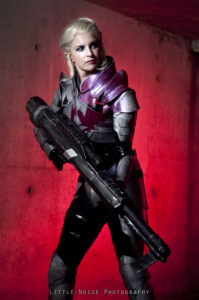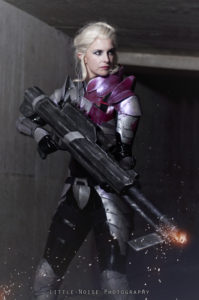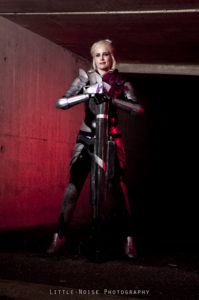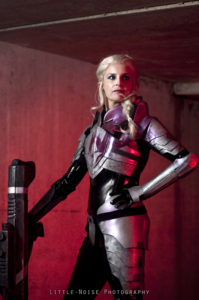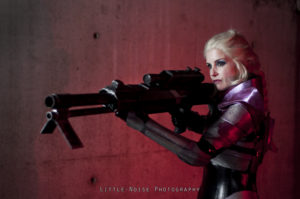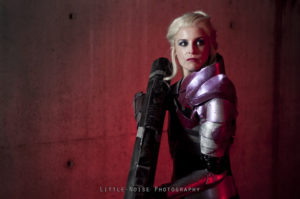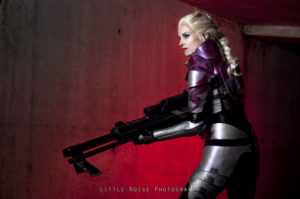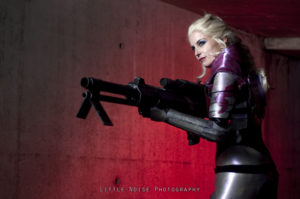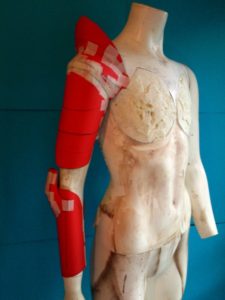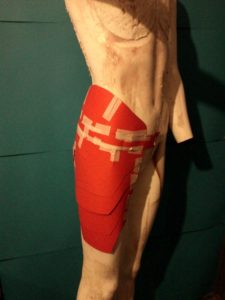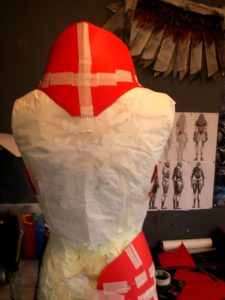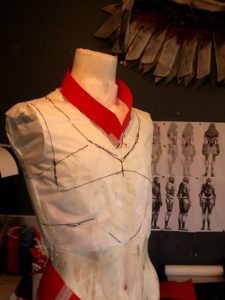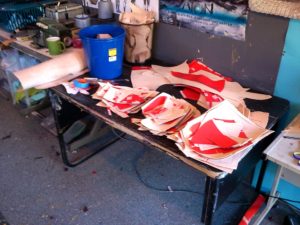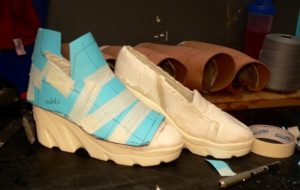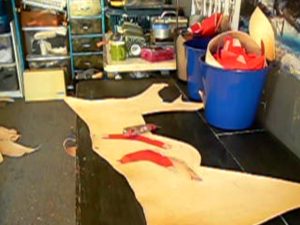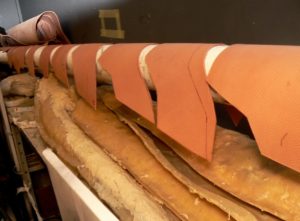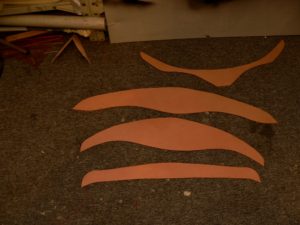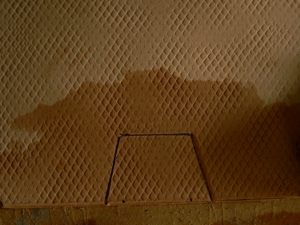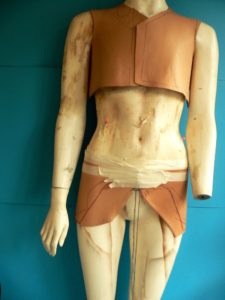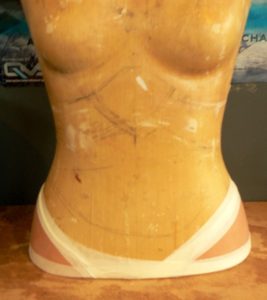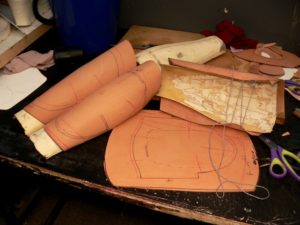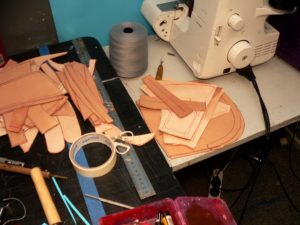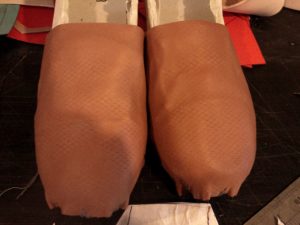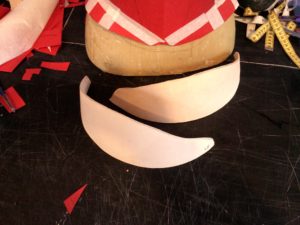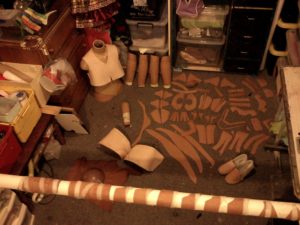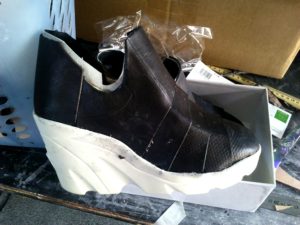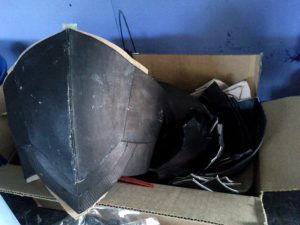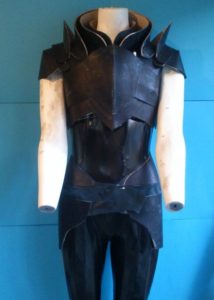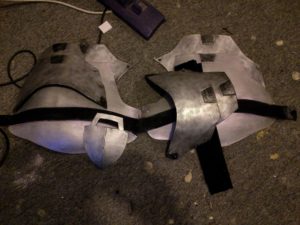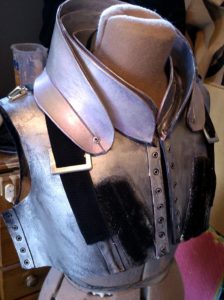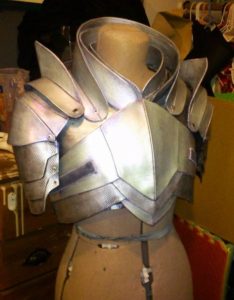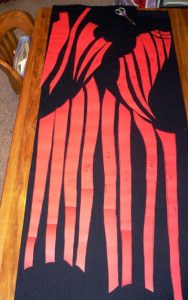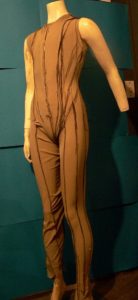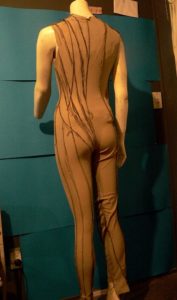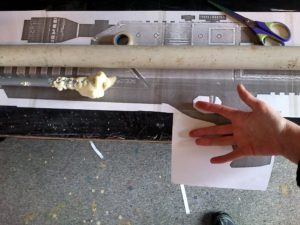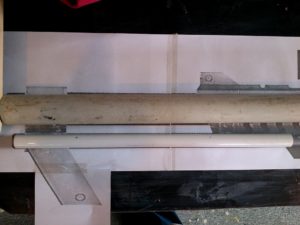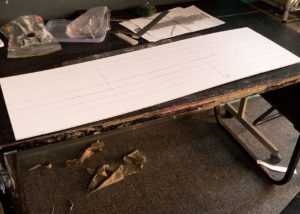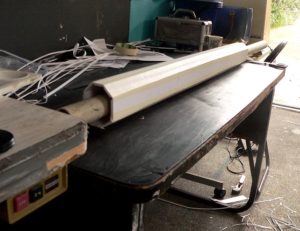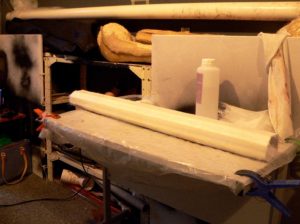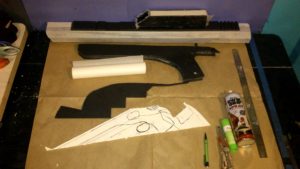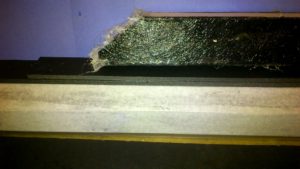-femshep
(aka BarbieShep)
(Photos by Sylvie Kirkman of Little Noise Photography, please do no redistribute without credit.)
Year finished: 2013
To Do: n/a
Updates since last photo: n/a
Inspiration: Space knight! Seriously though; gothic plate in space. Mass Effect 3 Blood Dragon armour.
Armour: all wet-formed and tooled russet. Sealed with rub n Buff and painted in resolene-pigment mix.
I started with making card templates. I did use a papercraft model of the rocket backplate to understand the dimensions of it better. The model also helped show the hidden internal layers of the shoulders which also allowed me to pattern my own.
The card patterns were as flat as could be following the cutting line details from the original.
But I had to include a few darts to help shape the large pieces to curves. These were opened when I transferred the patterns to leather. The leather was able to be formed over curves and then I placed the templates with darts restored over the shaped pieces before cutting. I even made matching leather patterns to cover my shoes.
I used very old school wetforming, and detailing.
The leather was all bonded with a water based contact adhesive and the leather dyed with black Feibings dye.
I cleaned all glue from surfaces once the dye highlighted where they sat.
I used a mix of Rb n Buff with some interference pigments at first but the effect was a bit dusty. Before I painted the dragon I cleaned the polish off and applied it fresh before applying Resolene.
The bodysuit was also patterned using game seaming, however due to time constraints I used a glossy PVC stretch fabric. This fabric is powerfully made and with all the extra seams becomes a very supportive garment.
I would like to at least add the silver details, and I will do so when I replace the current bodysuit.
Rifle: scratch built from architect’s boards and fibreglassed.
I printed off a full view of the model to scale. For someone taller than me the grip would be better proportioned however when I look at my character with the rifle her hands are just as small!
I used two pvc pipes of the correct diameter and was able to use that to support the housing and other elements made from flat panels.
All the panels were cut from 5mm foam core board- the outer layers were heavy paper or thin card.
I used tissue paper and glue stick over the masking tape to give some grip to the next layer which was epoxy resin and fibreglass tissue (spun glass not polyester.)
I repeated this process only twice so as to have the thinnest layer of fibreglass I could. I usually use microballoons to bulk out resin and make it light to wear/carry but it leaves the resin brittle. I wanted lightness and flex so thin layers of tissue was the compromise.
This has however held up to multiple use and regular disassembly for travel.
The rest of the housing was built the same way. PVC plastic as internal support, board and fibreglass shell.
